2019
Paired video installation (projector and screen); 6 min 18 secs.
Animation by The Mill with behaviour based on research by DeepMind.
Commissioned by the Cooper Hewitt, Smithsonian Design Museum and Cube design museum, 2019. Permanent collection of the Cooper Hewitt.
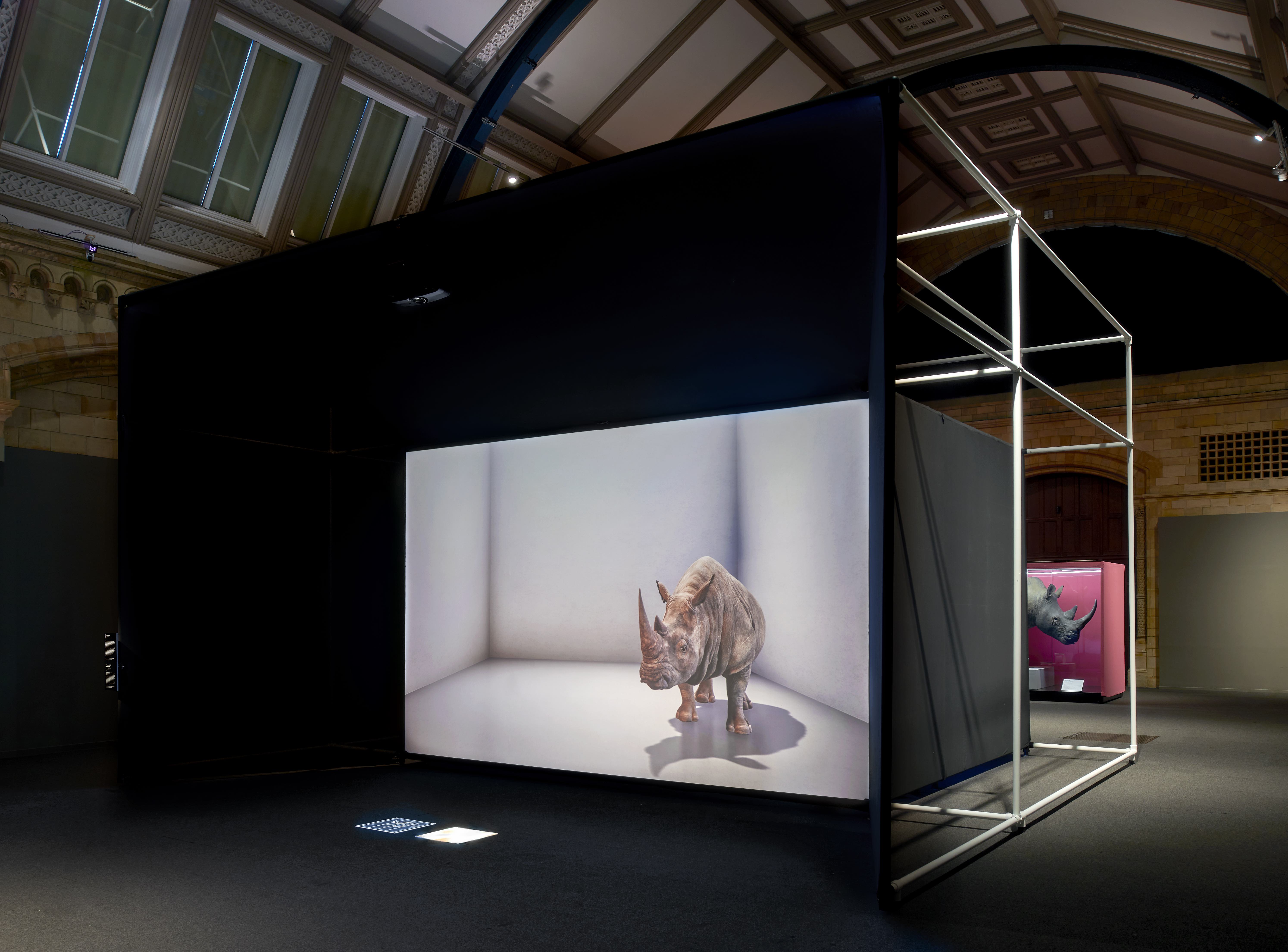
Installation view, 'The Lost Rhino' at The Natural History Museum, London in 2022. © The Trustees of The Natural History Museum, London, 2022. All Rights Reserved.
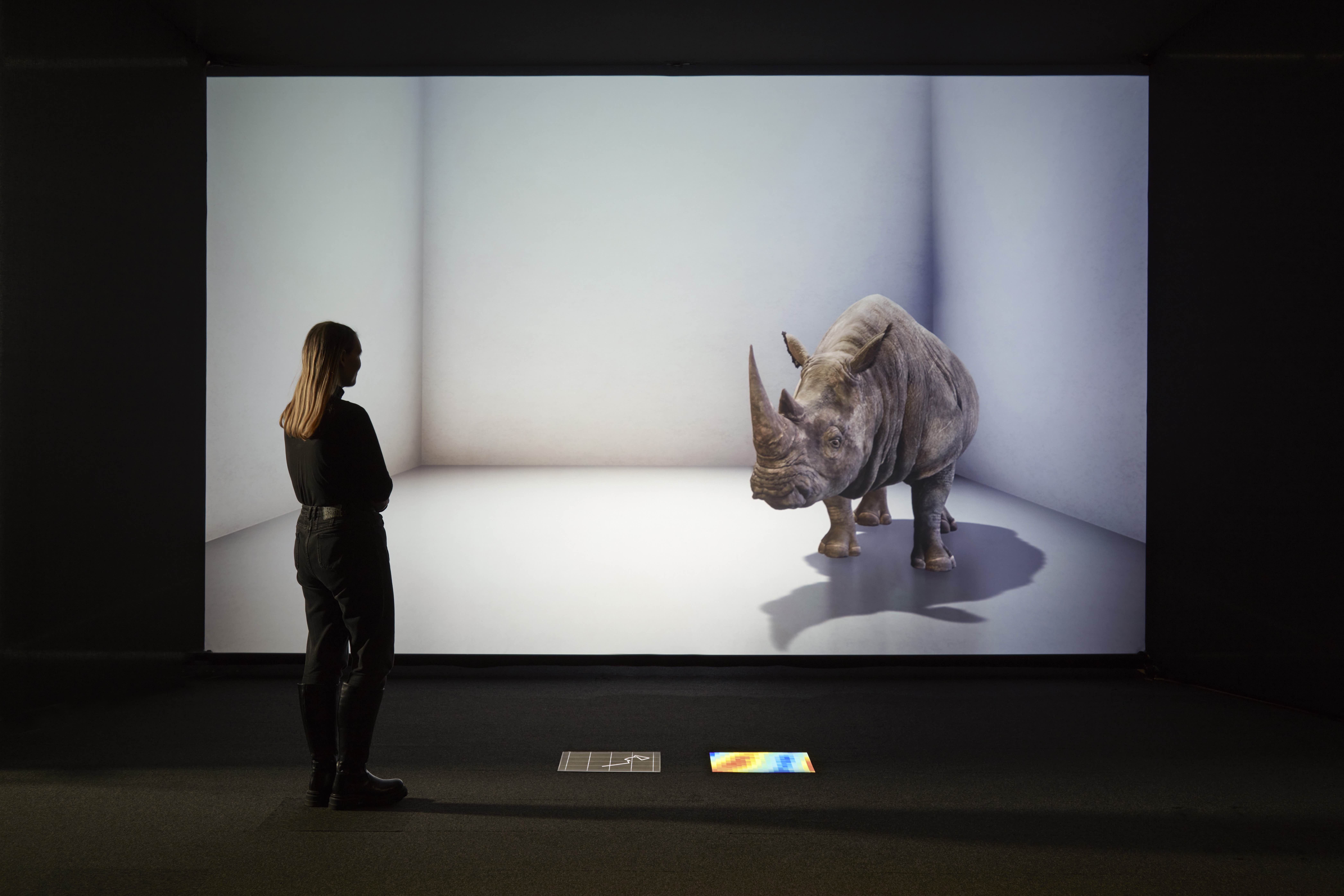
Installation view, 'The Lost Rhino' at The Natural History Museum, London in 2022. © The Trustees of The Natural History Museum, London, 2022. All Rights Reserved.
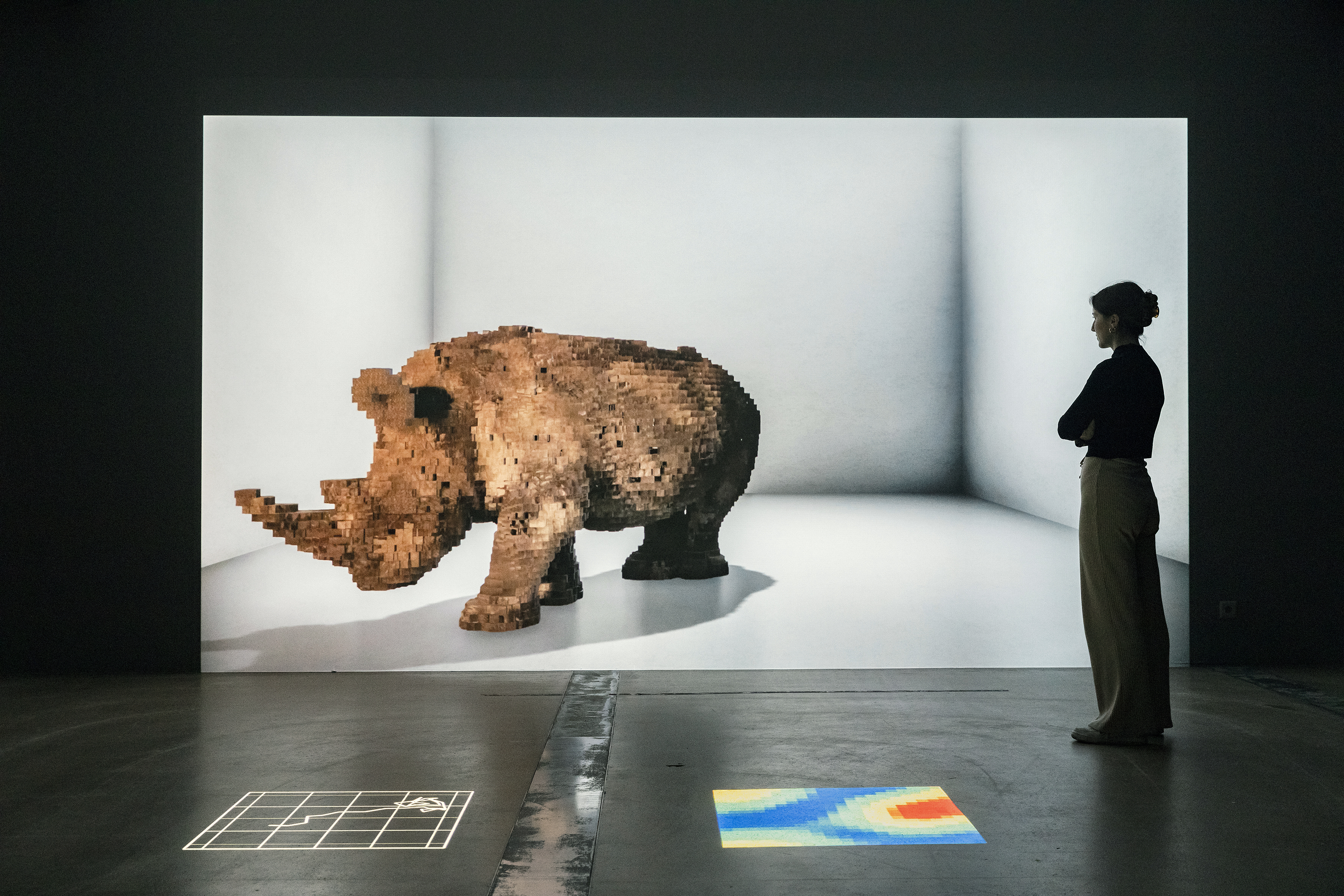
Installation view, 'Apocalypse - End Without End' at Natural History Museum, Bern, 2022. Photograph: Nelly Rodriguez.
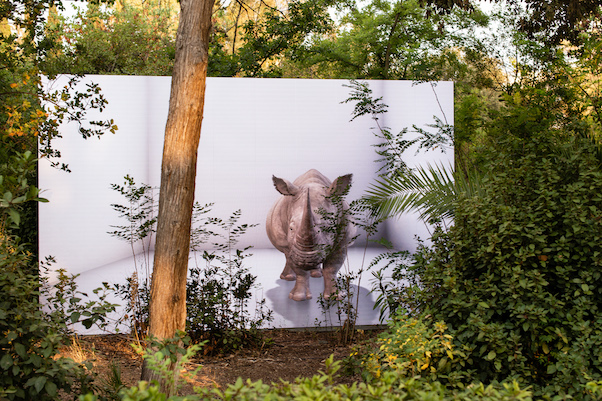
Installation view, 'You and AI: Through the Algorithmic Lens', Onassis Stegi, 2021. Photograph: © Panagiotis Baxevanis, Courtesy of Onassis Stegi.
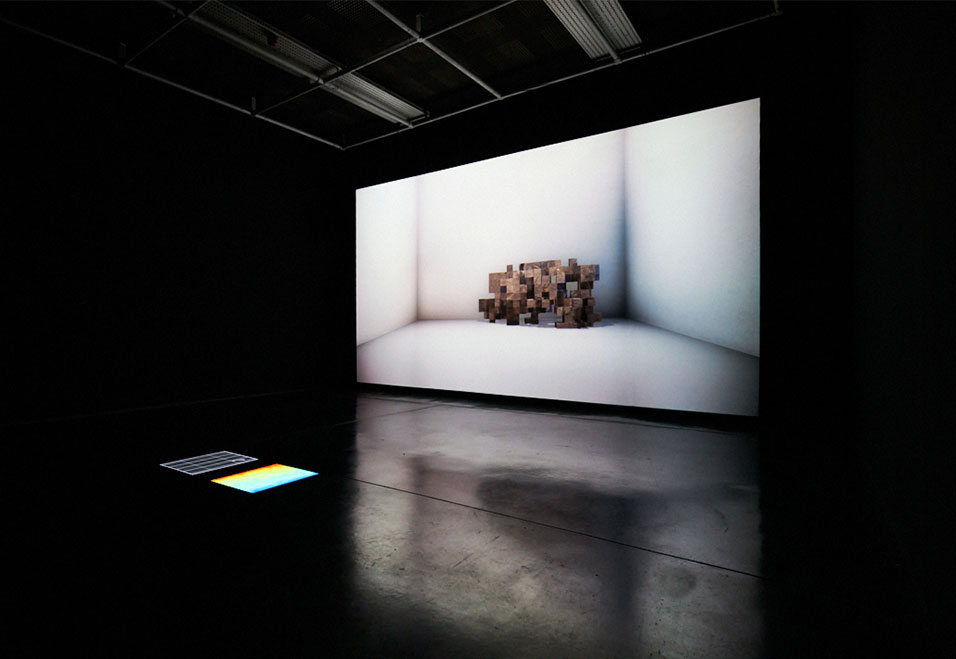
Installation view, 'And Say The Animal Responded?', FACT Liverpool, 2020. Photograph: © Rob Battersby.
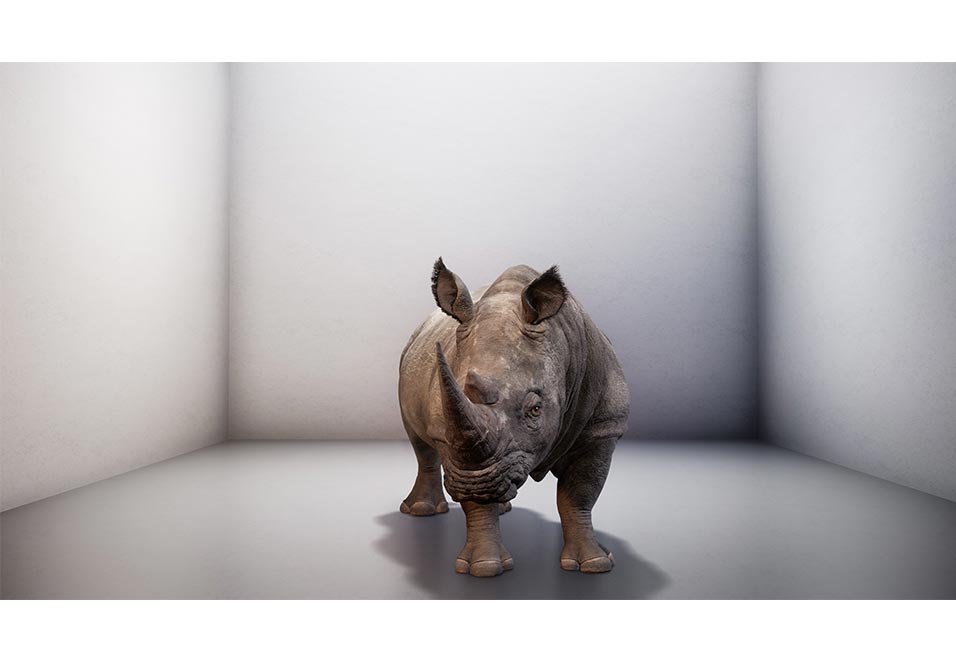
Video still from The Substitute, 2019.
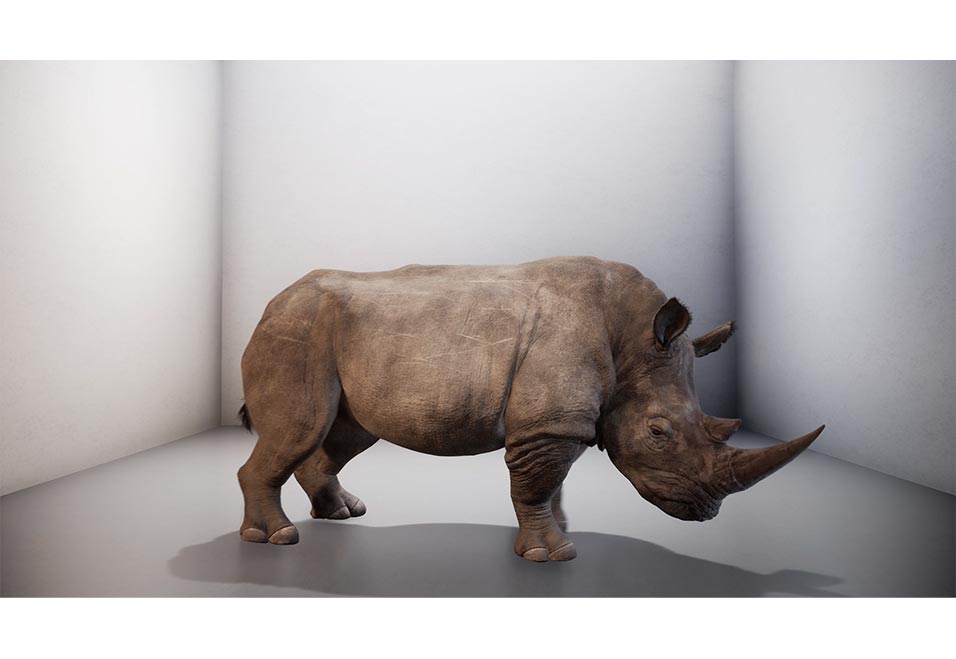
Video still from The Substitute, 2019.
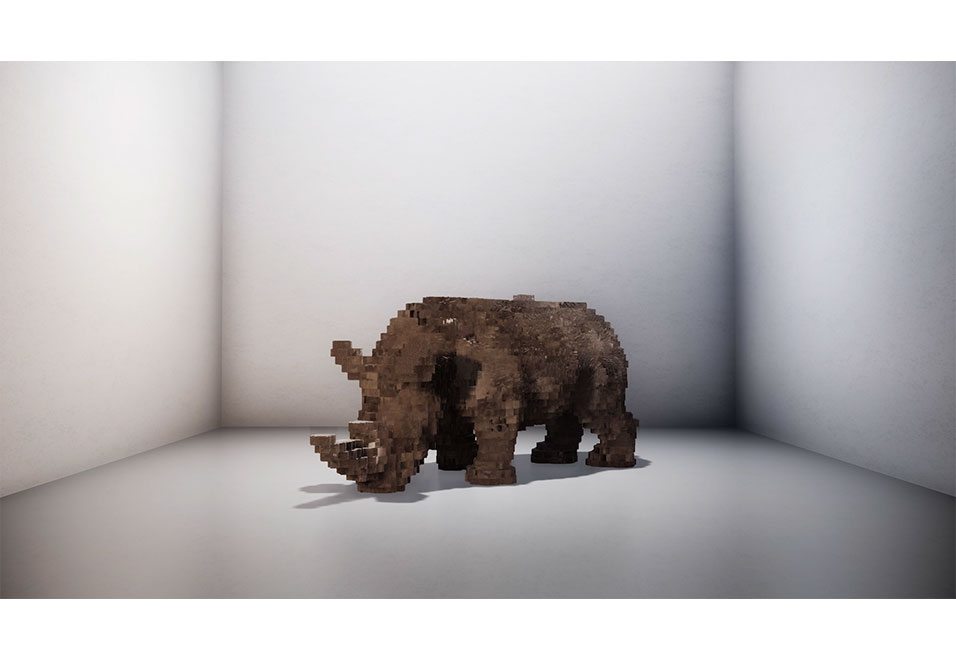
Video still from The Substitute, 2019.
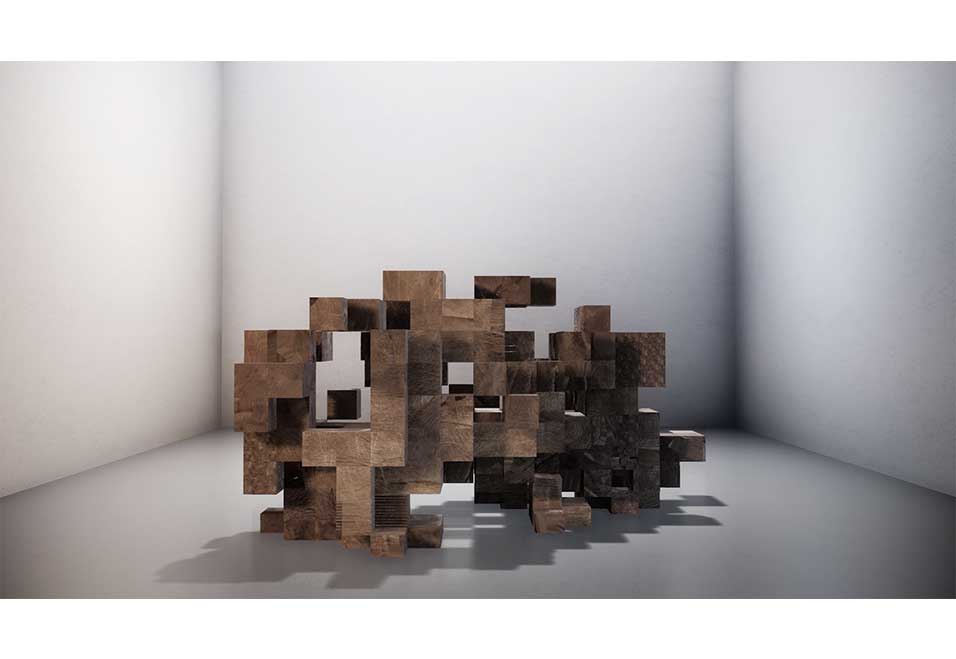
Video still from The Substitute, 2019.
On March 20, 2018, headlines announced the death of Sudan, the last male northern white rhinoceros (Ceratotherium simum cottoni). We briefly mourned a subspecies lost to human desire for the imagined life-enhancing properties of its horn, comforted that it might be brought back using biotechnology, albeit gestated by a different subspecies. But would humans protect a resurrected rhino, having decimated an entire species? And would this new rhino be real?
The Substitute explores a paradox: our preoccupation with creating new life forms, while neglecting existing ones. A northern white rhino is digitally brought back to life, informed by developments in the human creation of artificial intelligence (AI). Based on research from AI lab DeepMind, the rhino performs as an artificial agent, an autonomous entity that learns from its environment. A life-size projection, 5m wide, shows the artificial rhino roaming in a virtual world, becoming more “real” as it comprehends the limits of the space. As the artificial rhino habituates to its space, its form and sound toggle from pixelation to lifelike—reminding the viewer that this living, breathing rhino, coming to life without its natural context, is entirely artificial. The experimental data is played on a second screen, showing the path and development of grid cells. The rhino’s behaviours and sounds are adapted from rare research footage of the last herd, provided by Dr Richard Policht. Is this rhino, coming to life divorced from its natural context, a better substitute for the real?
Partial installation view of The Substitute in 'Nature—Cooper Hewitt Design Triennial', 2019. Shot by Matthew O’Connor, Good Company. Courtesy of Good Company.
PRODUCTION CREDITS
Alexandra Daisy Ginsberg (Johanna Just, Ness Lafoy, Ioana Man, Ana Maria Nicolaescu). The Mill (Art Director: Adam Parry; Executive Producer: Jarrad Vladich; Senior Producer: Kelly Woodward; Animation Supervisor: Paul Tempelman; Animators: Kieran Jordan, Maxime Cronier, Kevin O’Sullivan, and James Hickey; Unreal Developers: Roberto Costas, Mark Dooney, Haydn Roff, and Ed Thomas; Model and Rig: Andreas Graiche and Daniel Weiss). Sound: Chris Timpson, Aurelia Soundworks.
Special thanks to Andrea Banino/DeepMind and Dr. Richard Policht.
Installation view, 'The Lost Rhino' at The Natural History Museum, London in 2022. © The Trustees of The Natural History Museum, London, 2022. All Rights Reserved.
1/9Partial installation view of The Substitute in 'Nature—Cooper Hewitt Design Triennial', 2019. Shot by Matthew O’Connor, Good Company. Courtesy of Good Company.